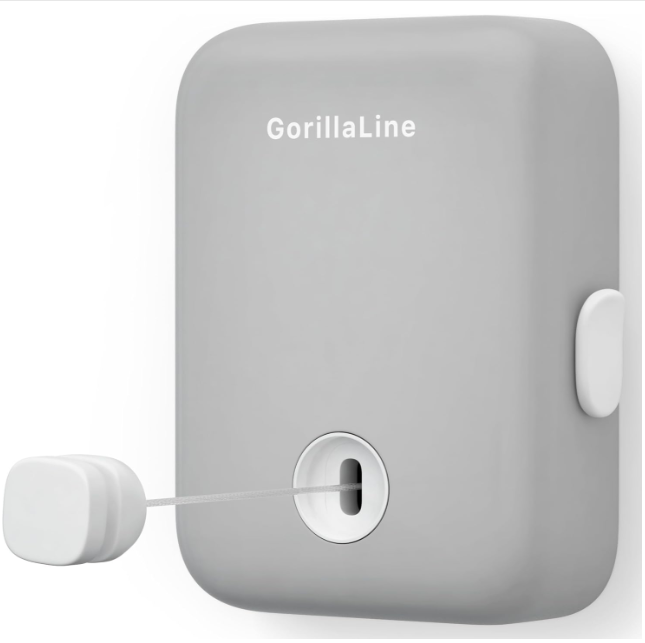How to make the most out of the space on your outdoor clothesline – 6 simple tips
Load up on your laundry as this expert information will allow you to dry more batches than ever before
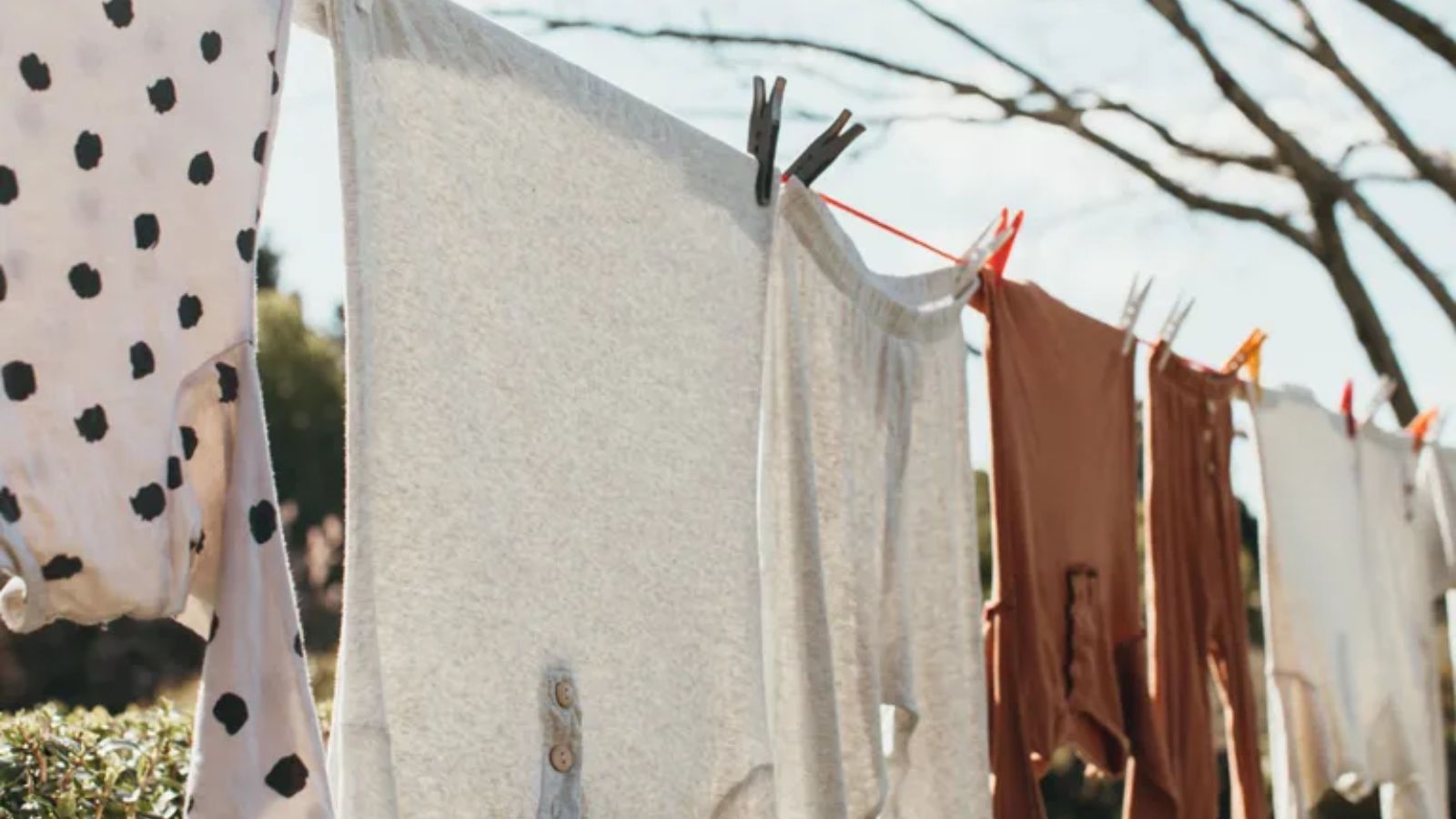

Summer is here, and what better season to switch off the dryer and let the fresh air dry your clothing! It’s a picturesque kind of scene – fresh bowls of fruit lining your kitchen counters, sitting on an outdoor bench reading a good book, fresh linens fluttering in the slight breeze. Who wouldn’t want to put their laundry out on a clothesline, saving themselves time and energy better spent enjoying the day? Moreover, if you're at a loss as to how to dry clothes in a small space, drying them outside is a no-brainer!
If you’re anything like myself or millions of people across the world, though, when exploring how to do laundry, you won't really have a battle plan for storing three loads of laundry outside. So, how does so much laundry actually fit on a washing line? If it’s a straight-across sort of line, are any clothing items able to overlap? And if it has many sections, are certain items designed for certain parts of the space?
Fortunately, after consulting experts, we can answer some of your laundry-related questions. Here, professionals in laundry and organizing share their expertise on how to make the most out of your washing line’s space. The smell of fresh cotton and extra dollars shaved off of your electric bill will be filling the house in no time.
1. Learn the best area in your yard to place your clothesline
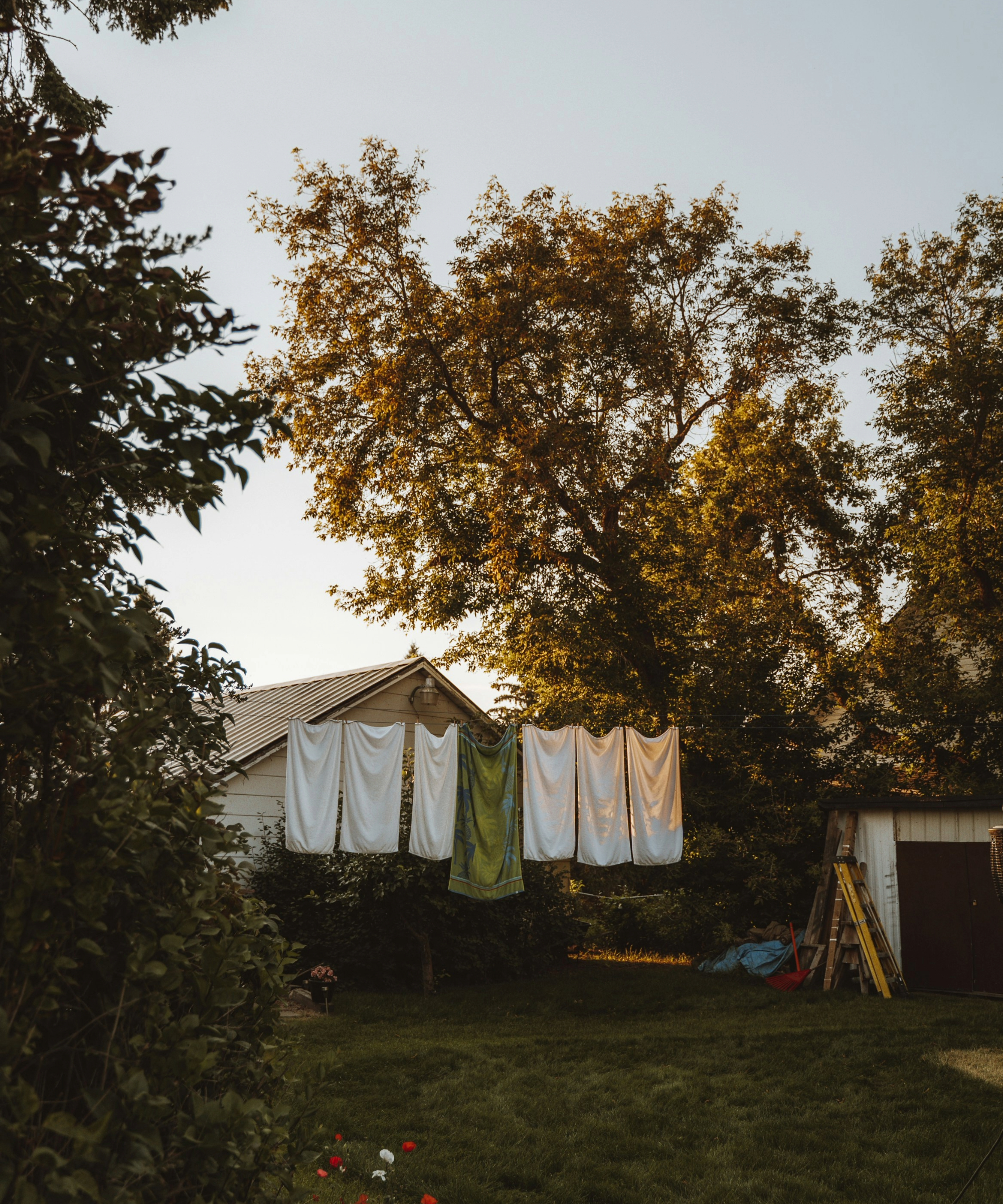
You can’t make the most out of the space on your clothesline without first knowing the best place to put it. Incorrectly placing your clothesline can result in damp, half-dry clothes that will smell bad or possibly require a run through your dryer, unless they are one of the items that should never be put in your dryer. This defeats the purpose of bringing them outside to air dry in the first place!
The sun will move throughout the day, meaning it won’t always be perfectly beaming over your wet clothes. Therefore, it’s important to take time to monitor where the sun hits best in your yard, and at what times of day your laundry is most likely to be able to fully dry outside.
‘You need to take time to understand the position of your line relative to the sun’s movement,’ says James Joun, laundry expert and co-founder of Rinse. ‘To maximize duration, starting at midday compared to late afternoon will give you more drying time and allow you to take advantage of a higher light density.’
2. Hang up larger and heavier items first

When you’re faced with a giant pile of wet laundry to hang up and limited space to hang it, it can be difficult to know where to start. Heidi Solomon, professional organizer and interior decorator at POSH Boston, recommends tackling your bigger items first.
‘It is recommended to hang the largest items first, such as sheets and towels,’ says Heidi. Heidi followed this up by further adding, ‘It is also important to balance the weight on the clothesline to prevent sagging.’
Regardless of what kind of line you’re using, if your line sags, the clothing you placed on the line might move with the bend, or the line may become permanently warped (not the best for future use). For this reason, it’s a must to ensure that the weight on any clothesline is evenly distributed, and not all concentrated in the middle.
Items such as towels tend to be heavier than clothing, and areas with a larger surface such as sheets may take longer to dry. By hanging these up first you’re better able to gauge how much space you have left on your clothesline overall after they are hung up, and you’re giving your larger items the longest possible time to dry off. It has also been said that line-drying your laundry can lead to better-smelling sheets!
3. Leave adequate space between your clothing items
You may think that leaving gaps between your items is far from the best way to make the most out of your clothesline space. However, if you don’t leave enough of a separation between clothing items, you’re actually risking your clothing taking longer to dry or gathering mildew.
‘To prevent mildew growth, at least an inch should be left between each item hung on the line,’ says Heidi. ‘Your clothes will also dry faster, have fewer wrinkles and be less heavy on the line if you hang them in a single layer.’
James seconds Heidi’s point. ‘Your garments will dry outside and take on the benefits of air-drying laundry due to the heat of the sun and prevailing winds. Therefore, the garments need adequate space to take advantage of airflow.’
4. Consider the best area for your clothes pegs to go
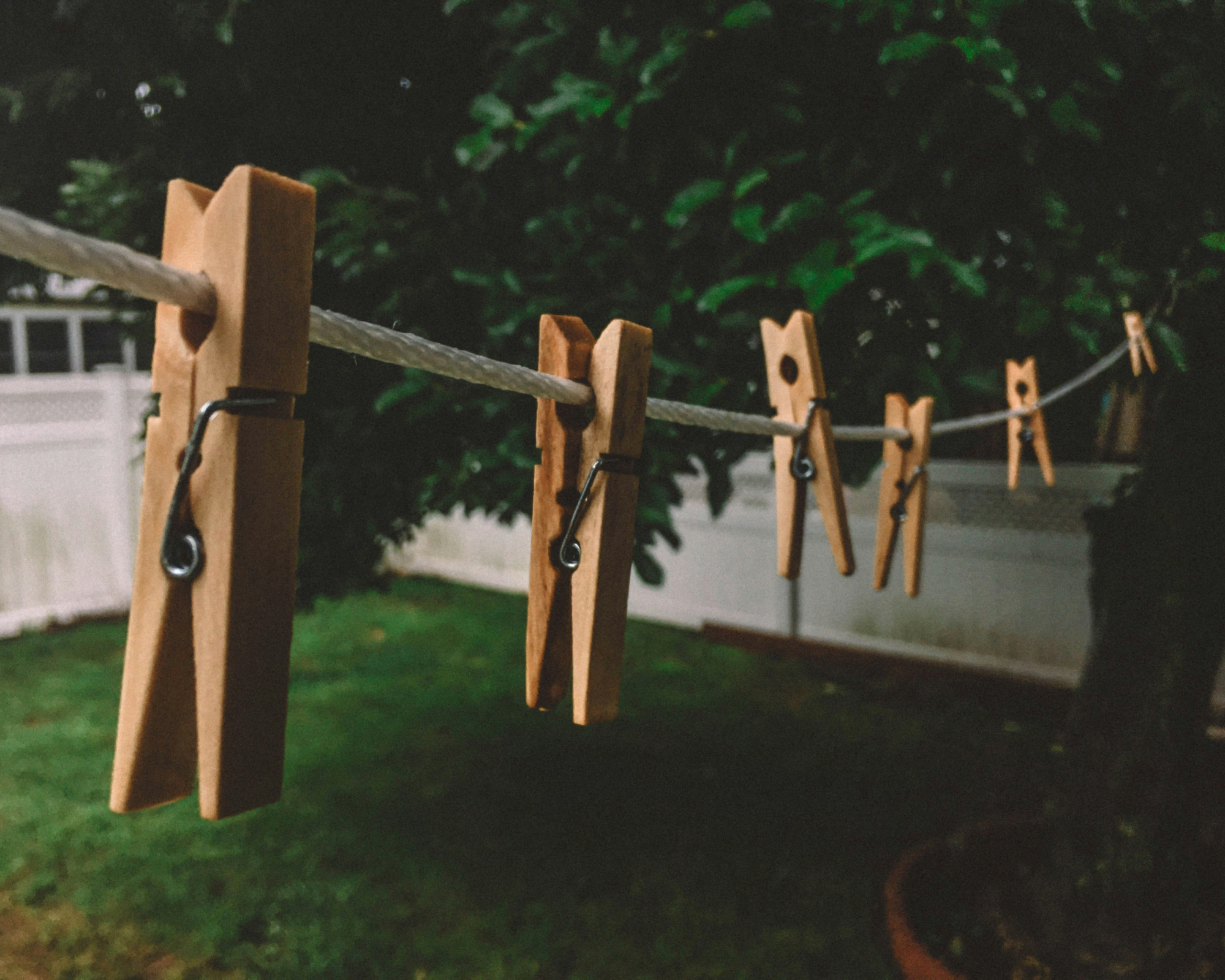
It may seem more efficient to hurriedly drape everything over your line, but taking a moment to consider the best way to hang up each item can be a real space saver, and kinder to your clothes.
‘Be intentional with where you hang your clothes,’ says James. ‘Assume that the area where you pin your clothing has a good chance of experiencing warping, stretching or peg marks, so choose inconspicuous places.’
James suggests hanging pants upside down from their cuffs. This saves space and allows any potential peg dents to be barely visible at the bottom of your outfit. If your shirts are heavy enough to possibly stretch at the shoulders, hanging these upside down from the bottom could be a good move, too. The bottom of your shirt is likely going to be tucked in anyway.
5. Shake or squeeze excess water out of your items before hanging
Removing excess water from your garments won’t only ease the amount of stress on your line, but it will also speed up drying time.
‘Shaking out excess water before hanging up your items will reduce the weight of your garment which can prevent stretching and speed up drying time,’ says James.
The sooner your items dry, the sooner they can be removed from your line and free up space to dry something else.
6. Understand the shape and style of the line you are working with
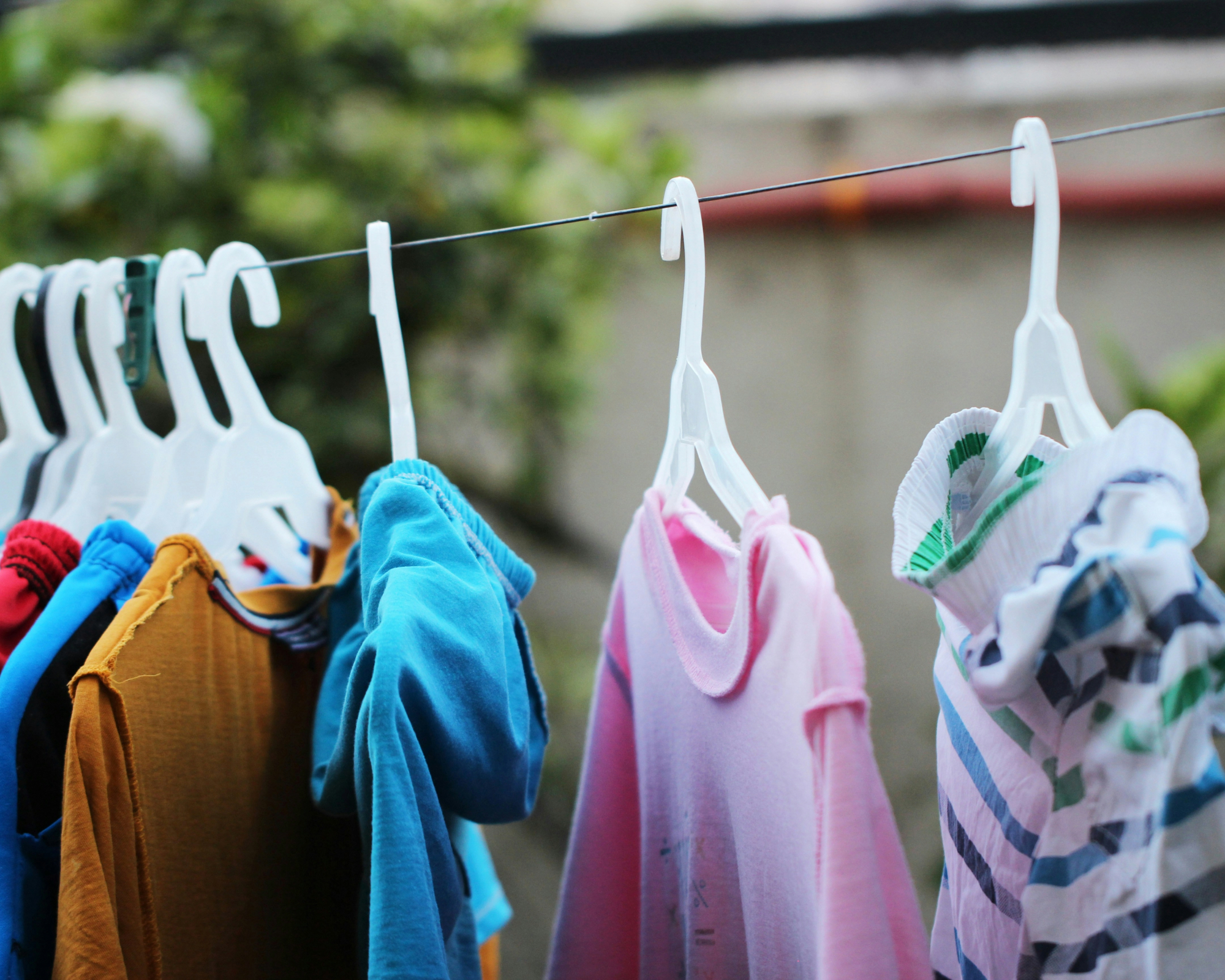
If you’re working with a clothesline that hangs straight across, your clothes will have no choice but to dry in a fixed area – with the perk of being up far from the ground. If you are working with a rotating umbrella line, you can rotate the device to make sure all items get hit by the sun evenly if it comes into your yard from a certain spot. And if you’re working with an outdoor drying rack, you can use portability to your advantage and move the wet laundry as the sun changes position.
An outdoor drying rack, such as this outdoor umbrella drying rack from Walmart, tends to be lower to the ground in comparison to its clothesline counterparts but offers more small segments to hang little items from such as pairs of socks.
It’s about finding what works for you, ultimately, and what you need will depend on the amount of laundry that needs to be done in your household. Perhaps putting wet clothes onto hangers and hanging those outside from your clothesline to dry may be a time saver for your busy family life, as the dry clothes will be wardrobe-ready!
If you have massive amounts of laundry to dry, consider drying some in the dryer and some outside, and reorganizing your small laundry room to prevent further stress while washing.
It’s important that your items are able to get entirely dry, however, you choose to do that. Damp clothes are not the way to go!
Sign up to the Homes & Gardens newsletter
Design expertise in your inbox – from inspiring decorating ideas and beautiful celebrity homes to practical gardening advice and shopping round-ups.

Ciéra is a writer and regional laureate with particular passions for art, design, philosophy and poetry. As well as contributing to Livingetc, she's an Editorial Assistant for Design Anthology, and a contributing writer for Homes & Gardens and Apartment Therapy. Previous commendations of hers include being Highly Commended by The Royal Society of Literature and receiving a prestigious MA Magazine Journalism scholarship to City University, London.
-
 The biggest curtain trends to follow in 2025 – 8 key looks to shop that will instantly elevate your rooms
The biggest curtain trends to follow in 2025 – 8 key looks to shop that will instantly elevate your roomsThese are the colors, styles, and materials to embrace in your windows this year if you want desirable drapes, plus our favorite places to shop the trends
By Lilith Hudson
-
 Reese Witherspoon upgraded a small corner into a cozy reading nook – designers say you can replicate her 'ultimate little escape' (from $18)
Reese Witherspoon upgraded a small corner into a cozy reading nook – designers say you can replicate her 'ultimate little escape' (from $18)'It’s all about comfort, calm, and just the right amount of cozy': You only need three things to follow Reese's example – and it's not only for book lovers
By Megan Slack
-
 ‘It leads to more headaches than it's worth’ – 4 reasons you should never store things in your oven, including fire risks and serious illness
‘It leads to more headaches than it's worth’ – 4 reasons you should never store things in your oven, including fire risks and serious illnessYour oven is for cooking, and cooking only, experts urge
By Chiana Dickson
-
 It’s a concept straight out of a fashionista's playbook, but I used the Sandwich Method to organize my kitchen shelves – it’s never looked sleeker
It’s a concept straight out of a fashionista's playbook, but I used the Sandwich Method to organize my kitchen shelves – it’s never looked sleekerIt transformed messy to mesmerizing in a matter of seconds
By Punteha van Terheyden
-
 The value-based decluttering method changed my attitude toward the task – and turbocharged functionality in my small home
The value-based decluttering method changed my attitude toward the task – and turbocharged functionality in my small homeIt's proven to be transformative for my home over the last six months
By Chiana Dickson
-
 5 low-energy and useful tasks to try instead of doom-scrolling – this brain hack will break bad habits
5 low-energy and useful tasks to try instead of doom-scrolling – this brain hack will break bad habitsExperts urge you to try it for your wellbeing
By Chiana Dickson
-
 How to store a comforter or duvet properly over the warmer months – pros say 'breathable is the buzzword'
How to store a comforter or duvet properly over the warmer months – pros say 'breathable is the buzzword'Clean, air out, fold and roll your way to a fresh and fluffy duvet
By Ottilie Blackhall
-
 This tiered Joseph Joseph dish rack solved the constant sink-side traffic jam in my kitchen
This tiered Joseph Joseph dish rack solved the constant sink-side traffic jam in my kitchenI wish I’d swapped to it sooner
By Punteha van Terheyden
-
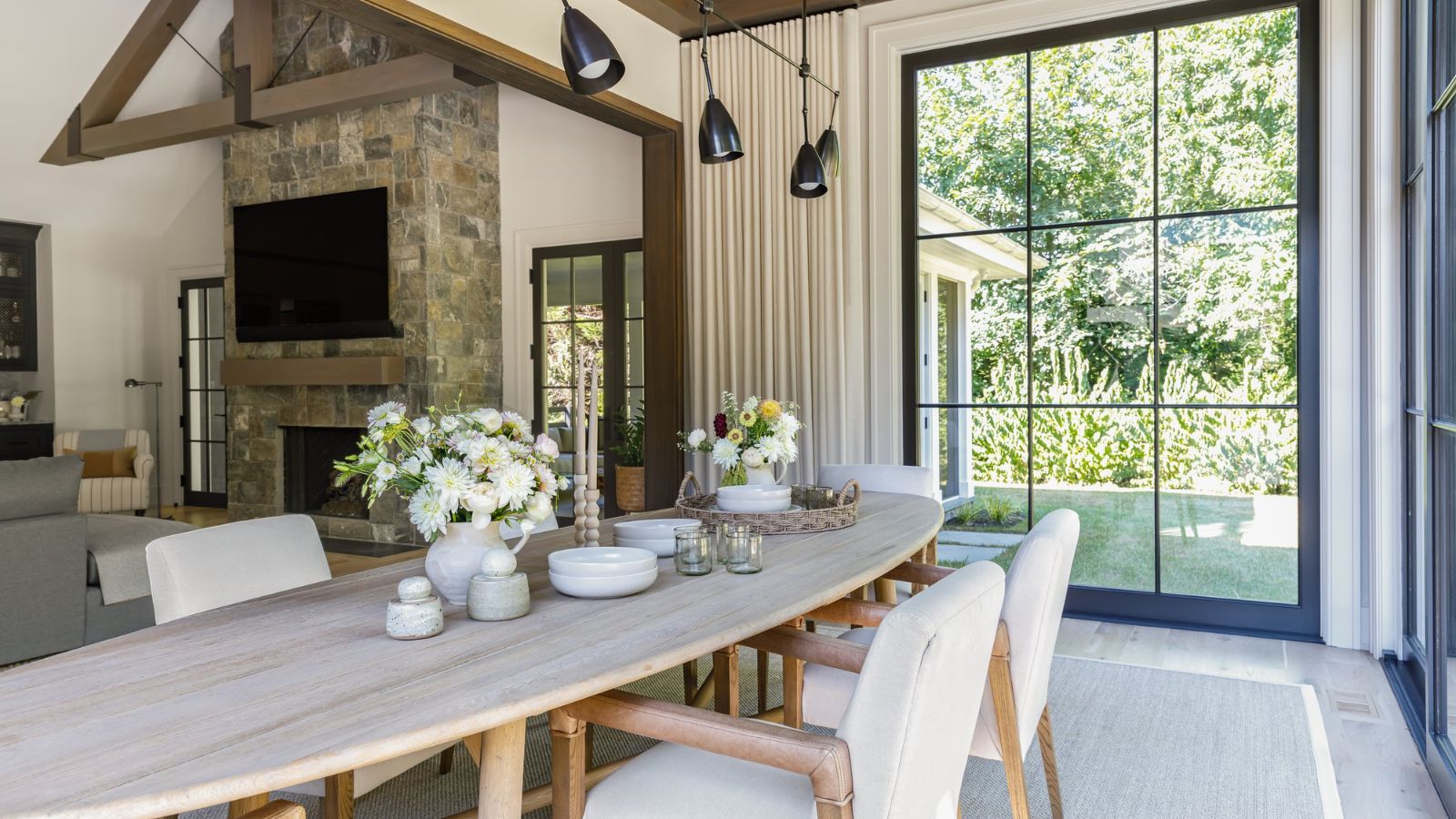 ‘An important tenet in staying organized’ – 6 easy habits for a more minimalist and streamlined home
‘An important tenet in staying organized’ – 6 easy habits for a more minimalist and streamlined homeWorking on these organizational habits will make your home more manageable
By Chiana Dickson
-
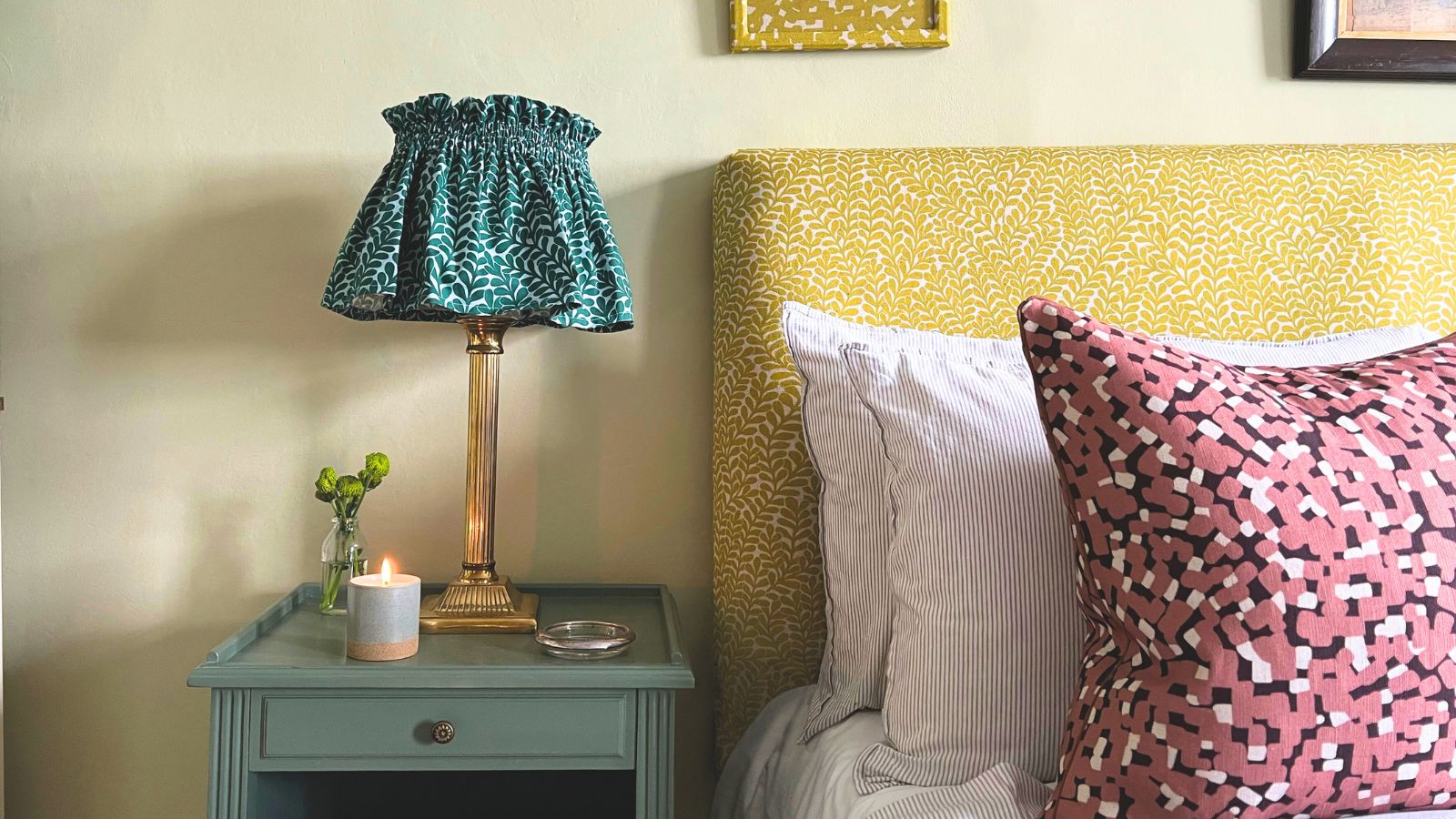 9 things to organize in April 2025 to prepare your home for a season of socializing and warmer weather ahead
9 things to organize in April 2025 to prepare your home for a season of socializing and warmer weather aheadGet sorted now for easier spring and summer get-togethers
By Chiana Dickson
